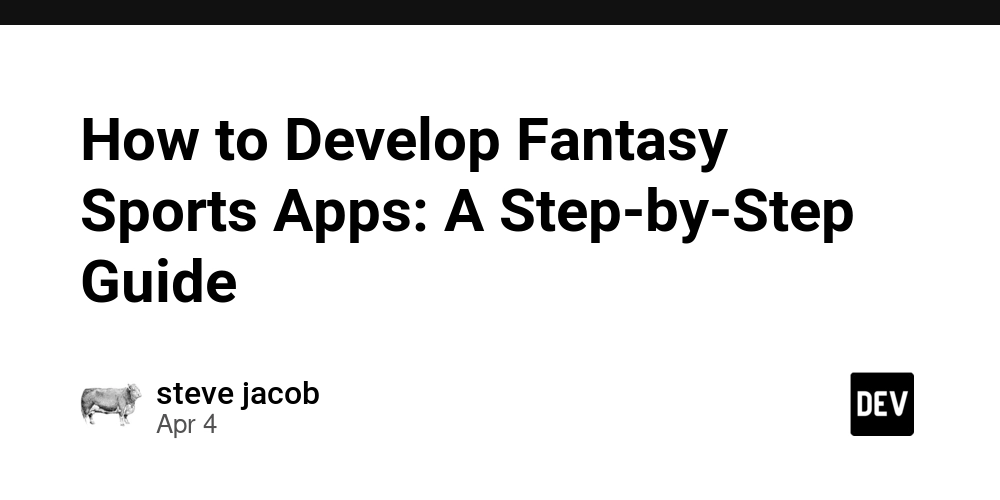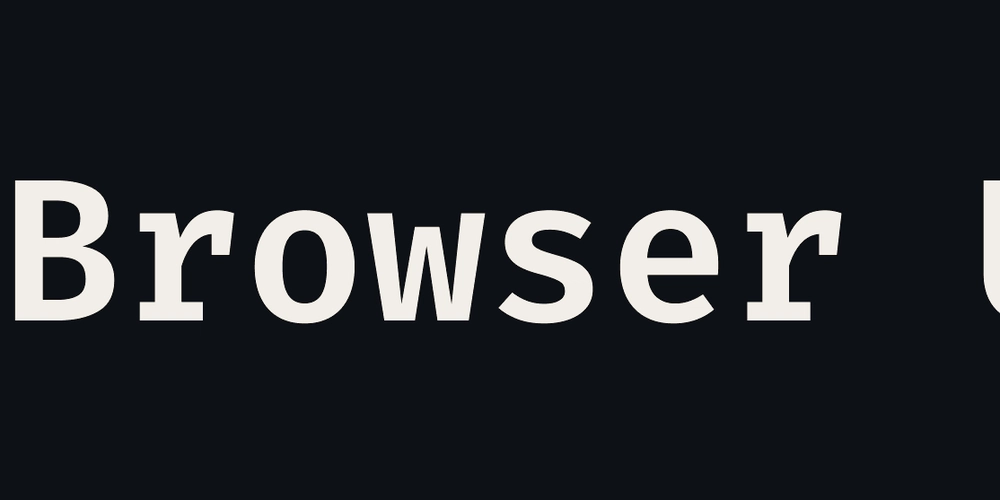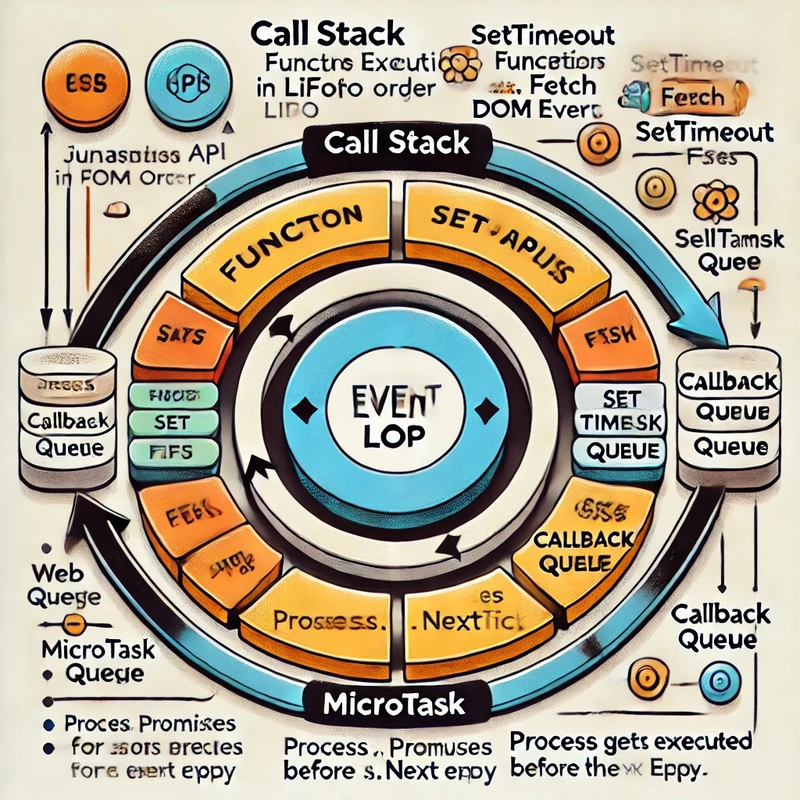How to Develop Fantasy Sports Apps: A Step-by-Step Guide
Fantasy sports apps have revolutionized the sports industry by offering an engaging platform for fans to participate in real-time competitions. With the growing demand for interactive sports experiences, developing a fantasy sports app can be a lucrative opportunity. This guide will walk you through the essential steps of building a fantasy sports application. Understanding the Fantasy Sports Market Before starting development, it’s crucial to understand the market landscape. Research popular fantasy sports platforms like ESPN Fantasy, DraftKings, and FanDuel to identify what works. The global fantasy sports market is projected to reach billions of dollars, making it a competitive but rewarding industry. Define Your App’s Niche and Features Choosing a niche can help differentiate your app. You can focus on: Single sport (e.g., football, basketball, cricket) Multiple sports Season-long leagues or daily contests Predictive analytics-driven games Essential features include: User registration & profile management Live score updates & statistics AI-driven player recommendations Multiple contest formats Secure payment integration Social media integration Push notifications Select the Right Tech Stack The choice of technologies is critical for app performance and scalability: Front-end: React Native or Flutter for cross-platform development. Back-end: Node.js, Python, or Java. Database: MySQL, MongoDB, or Firebase. APIs: Sports data APIs like SportRadar, FantasyData, or LiveScore. Legal Compliance and Licensing Fantasy sports apps must comply with regional laws and gambling regulations. Ensure: Compliance with laws like the Unlawful Internet Gambling Enforcement Act (UIGEA) in the U.S. Necessary gaming licenses based on jurisdiction. GDPR or CCPA compliance for data privacy. UI/UX Design A seamless and intuitive UI enhances user experience. Key design principles: Minimalist layout for easy navigation. High-quality graphics and animations. Responsive design for mobile and web. Development and Testing The development process involves: Backend development to handle data processing. Frontend development for user interface. API integration for real-time sports data. Rigorous testing to ensure bug-free performance. Monetization Strategies To generate revenue, consider: Entry fees for contests Advertisements and sponsorships In-app purchases for premium features Subscription plans for exclusive content Marketing and User Acquisition A robust marketing strategy includes: Social media campaigns Influencer partnerships Referral programs SEO and ASO optimization Post-Launch Maintenance and Updates Continuous improvements keep the app relevant. Regularly update features, fix bugs, and analyze user feedback to enhance the experience. Conclusion Developing a fantasy sports app requires strategic planning, cutting-edge technology, and compliance with legal standards. By focusing on user engagement, robust performance, and a solid marketing strategy, you can build a successful platform that stands out in the competitive fantasy sports industry.

Fantasy sports apps have revolutionized the sports industry by offering an engaging platform for fans to participate in real-time competitions. With the growing demand for interactive sports experiences, developing a fantasy sports app can be a lucrative opportunity. This guide will walk you through the essential steps of building a fantasy sports application.
- Understanding the Fantasy Sports Market Before starting development, it’s crucial to understand the market landscape. Research popular fantasy sports platforms like ESPN Fantasy, DraftKings, and FanDuel to identify what works. The global fantasy sports market is projected to reach billions of dollars, making it a competitive but rewarding industry.
- Define Your App’s Niche and Features Choosing a niche can help differentiate your app. You can focus on: Single sport (e.g., football, basketball, cricket)
Multiple sports
Season-long leagues or daily contests
Predictive analytics-driven games
Essential features include:
User registration & profile management
Live score updates & statistics
AI-driven player recommendations
Multiple contest formats
Secure payment integration
Social media integration
Push notifications
- Select the Right Tech Stack The choice of technologies is critical for app performance and scalability: Front-end: React Native or Flutter for cross-platform development.
Back-end: Node.js, Python, or Java.
Database: MySQL, MongoDB, or Firebase.
APIs: Sports data APIs like SportRadar, FantasyData, or LiveScore.
- Legal Compliance and Licensing Fantasy sports apps must comply with regional laws and gambling regulations. Ensure: Compliance with laws like the Unlawful Internet Gambling Enforcement Act (UIGEA) in the U.S.
Necessary gaming licenses based on jurisdiction.
GDPR or CCPA compliance for data privacy.
- UI/UX Design A seamless and intuitive UI enhances user experience. Key design principles: Minimalist layout for easy navigation.
High-quality graphics and animations.
Responsive design for mobile and web.
- Development and Testing The development process involves: Backend development to handle data processing.
Frontend development for user interface.
API integration for real-time sports data.
Rigorous testing to ensure bug-free performance.
- Monetization Strategies To generate revenue, consider: Entry fees for contests
Advertisements and sponsorships
In-app purchases for premium features
Subscription plans for exclusive content
- Marketing and User Acquisition A robust marketing strategy includes: Social media campaigns
Influencer partnerships
Referral programs
SEO and ASO optimization
- Post-Launch Maintenance and Updates Continuous improvements keep the app relevant. Regularly update features, fix bugs, and analyze user feedback to enhance the experience. Conclusion Developing a fantasy sports app requires strategic planning, cutting-edge technology, and compliance with legal standards. By focusing on user engagement, robust performance, and a solid marketing strategy, you can build a successful platform that stands out in the competitive fantasy sports industry.












































































































































































![[The AI Show Episode 142]: ChatGPT’s New Image Generator, Studio Ghibli Craze and Backlash, Gemini 2.5, OpenAI Academy, 4o Updates, Vibe Marketing & xAI Acquires X](https://www.marketingaiinstitute.com/hubfs/ep%20142%20cover.png)



























































































































![[DEALS] The Premium Learn to Code Certification Bundle (97% off) & Other Deals Up To 98% Off – Offers End Soon!](https://www.javacodegeeks.com/wp-content/uploads/2012/12/jcg-logo.jpg)


![From drop-out to software architect with Jason Lengstorf [Podcast #167]](https://cdn.hashnode.com/res/hashnode/image/upload/v1743796461357/f3d19cd7-e6f5-4d7c-8bfc-eb974bc8da68.png?#)








































































































.png?#)

































_Christophe_Coat_Alamy.jpg?#)
 (1).webp?#)





































































































![Apple Considers Delaying Smart Home Hub Until 2026 [Gurman]](https://www.iclarified.com/images/news/96946/96946/96946-640.jpg)
![iPhone 17 Pro Won't Feature Two-Toned Back [Gurman]](https://www.iclarified.com/images/news/96944/96944/96944-640.jpg)
![Tariffs Threaten Apple's $999 iPhone Price Point in the U.S. [Gurman]](https://www.iclarified.com/images/news/96943/96943/96943-640.jpg)




































































































































